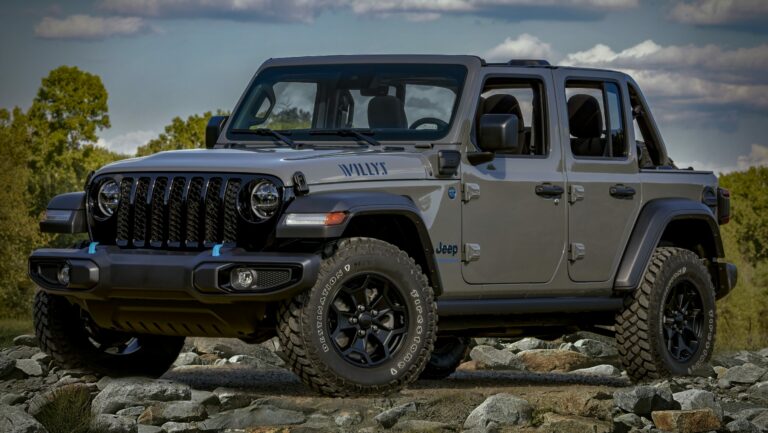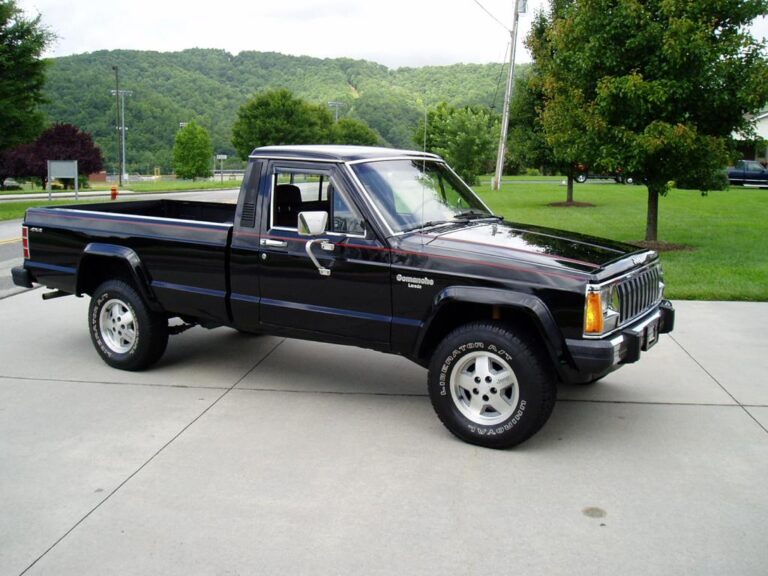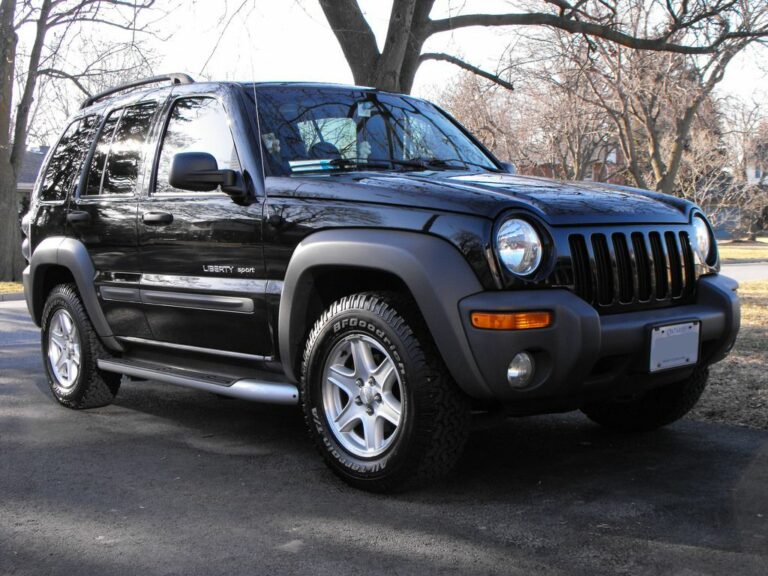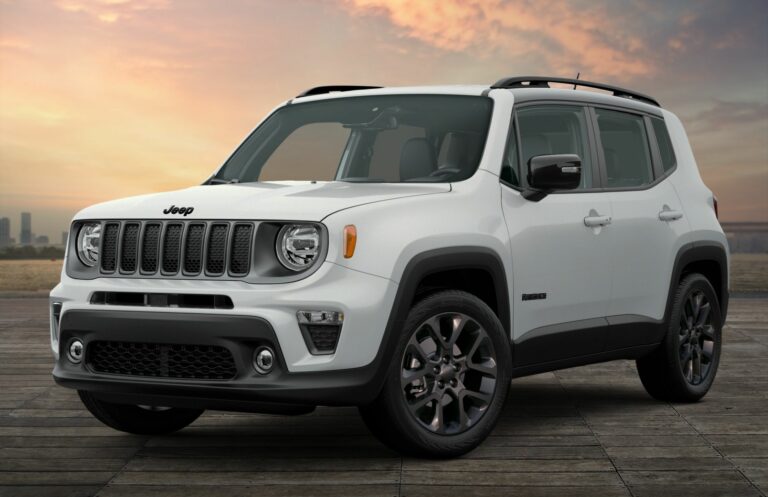Jeep Grand Cherokee Parts: A Comprehensive Guide to Maintenance, Repair, and Upgrade
Jeep Grand Cherokee Parts: A Comprehensive Guide to Maintenance, Repair, and Upgrade jeeps.truckstrend.com
The Jeep Grand Cherokee stands as an iconic symbol of American automotive engineering, seamlessly blending luxurious comfort with rugged off-road capability. From its inception, it has captivated drivers seeking both daily utility and adventurous escapes. However, like any sophisticated machine, the Grand Cherokee relies on a vast network of interconnected parts to deliver its renowned performance, safety, and reliability. Understanding these components, their functions, and their maintenance is paramount for any owner looking to preserve their vehicle’s integrity and maximize its lifespan. This comprehensive guide delves into the intricate world of Jeep Grand Cherokee parts, offering insights into their importance, maintenance, and sourcing, ensuring your beloved SUV continues to conquer both urban jungles and untamed trails.
Understanding the Ecosystem of Grand Cherokee Parts
Jeep Grand Cherokee Parts: A Comprehensive Guide to Maintenance, Repair, and Upgrade
At its core, the Jeep Grand Cherokee is a complex amalgamation of thousands of individual parts, each playing a vital role in its overall operation. From the smallest sensor to the largest engine block, every component contributes to the vehicle’s functionality, safety, and driving experience. For owners, navigating the world of replacement parts often involves a choice between Original Equipment Manufacturer (OEM), aftermarket, or used/refurbished components.
- OEM (Original Equipment Manufacturer) Parts: These are identical to the parts your Grand Cherokee was built with, sourced directly from Mopar (Chrysler, Dodge, Jeep, Ram’s parts division) or their authorized suppliers.
- Benefits: Guaranteed fit, quality, and performance; often come with a warranty.
- Considerations: Typically the most expensive option.
- Aftermarket Parts: Produced by third-party manufacturers, these parts are designed to function as replacements for OEM components.

- Benefits: More affordable, wider variety of options (including performance upgrades), competitive pricing.
- Considerations: Quality can vary significantly; research reputable brands is crucial. Fitment might not always be perfect.
- Used/Refurbished Parts: Sourced from salvaged vehicles or rebuilt components.

- Benefits: Most cost-effective.
- Considerations: Higher risk of unknown wear or defects; limited or no warranty. Best for non-critical, easily replaceable components or if budget is extremely tight.

Choosing the right part depends on your budget, the criticality of the component, and your performance expectations. For safety-critical systems like brakes and steering, OEM or high-quality aftermarket parts are highly recommended.
Key Component Categories and Their Importance
To effectively maintain your Grand Cherokee, it’s helpful to categorize its parts into major systems. Each system has unique components vital for specific functions.
A. Engine & Powertrain Components: The Heart of Your Grand Cherokee
The engine is the powerhouse, and its associated powertrain components ensure that power is effectively generated and delivered. These parts are critical for performance, fuel efficiency, and emissions control.
- Key Parts: Spark plugs, ignition coils, oil filters, air filters, fuel filters, timing chains/belts, oxygen sensors, crankshaft position sensors, water pump, radiator, belts, and hoses.
- Importance: Direct impact on engine health, power output, and longevity. Regular replacement of consumables (filters, spark plugs) prevents costly damage.
- Maintenance: Adhering to regular oil changes, replacing air and fuel filters, and checking the timing system are crucial. Coolant flushes keep the engine running at optimal temperatures.
- Signs of Wear: Reduced power, misfires, poor fuel economy, strange noises (e.g., squealing belts), overheating, or illumination of the "Check Engine" light.
- Practical Advice: Always use the manufacturer-recommended oil viscosity and genuine or high-quality filters. Neglecting these can lead to premature engine wear.
B. Brake System Parts: Ensuring Your Safety on the Road
Your Grand Cherokee’s brake system is its primary safety feature, responsible for slowing and stopping the vehicle effectively. Compromised brake components pose a significant risk.
- Key Parts: Brake pads, brake rotors (discs), brake calipers, brake lines, master cylinder, and brake fluid.
- Importance: Directly responsible for stopping power and vehicle control. Properly functioning brakes are non-negotiable for safety.
- Maintenance: Regular inspection of pad and rotor wear, checking brake fluid levels and condition, and periodic fluid flushes are essential.
- Signs of Wear: Squealing or grinding noises when braking, vibration through the steering wheel or pedal, a spongy or soft brake pedal, increased stopping distances, or the brake warning light illuminating.
- Practical Advice: Never postpone brake repairs. Invest in quality pads and rotors for optimal performance and less brake dust. Consider ceramic pads for reduced noise and dust.
C. Suspension & Steering Components: Comfort, Control, and Off-Road Prowess
These systems dictate your Grand Cherokee’s ride quality, handling, and ability to tackle varied terrain. They absorb road imperfections, maintain tire contact, and allow precise control.
- Key Parts: Shocks, struts, coil springs, leaf springs (on older models), control arms, ball joints, tie rods, sway bar links, steering rack/box, power steering pump, and various bushings.
- Importance: Provides a comfortable ride, stable handling, and accurate steering response. Crucial for off-road articulation and stability.
- Maintenance: Regular visual inspections for leaks, damage, or excessive play. Wheel alignments should be performed periodically or after replacing suspension components.
- Signs of Wear: Bouncy or harsh ride, excessive body roll in turns, clunking or knocking noises over bumps, uneven tire wear, loose or wandering steering, or difficulty maintaining a straight line.
- Practical Advice: Address suspension issues promptly to prevent premature wear on tires and other components. Many Grand Cherokee owners upgrade to aftermarket lift kits and heavy-duty suspension for enhanced off-road performance.
D. Electrical & Lighting Systems: Powering Your Grand Cherokee’s Functions
The electrical system is the vehicle’s nervous system, powering everything from the engine’s ignition to the infotainment system and all lighting.
- Key Parts: Battery, alternator, starter motor, wiring harnesses, fuses, relays, headlamps, taillights, interior lights, various sensors (ABS, wheel speed, TPMS, engine management), and infotainment components.
- Importance: Enables engine starting, powers all accessories, ensures visibility, and provides critical sensor data for vehicle operation.
- Maintenance: Regular battery checks (terminals clean, charge level), ensuring all lights are functional, and inspecting fuses.
- Signs of Wear: Dim lights, slow engine cranking, flickering lights, electrical malfunctions (e.g., power windows not working), warning lights on the dashboard, or a dead battery.
- Practical Advice: Keep battery terminals clean to ensure good conductivity. Consider upgrading to LED lighting for better visibility and lower power consumption.
E. Drivetrain & Transmission Parts: Transferring Power to the Wheels
The drivetrain is responsible for transferring power from the engine and transmission to the wheels, allowing your Grand Cherokee to move. This is particularly vital for its 4×4 capabilities.
- Key Parts: Transmission fluid, transmission filter, transfer case, driveshafts, universal joints (U-joints), differentials, axle shafts, and CV joints.
- Importance: Ensures smooth power delivery, allows for gear changes, and enables all-wheel-drive or four-wheel-drive functionality.
- Maintenance: Regular transmission fluid and filter changes, transfer case fluid changes, and differential fluid changes according to the manufacturer’s schedule are paramount. Inspect for fluid leaks and U-joint play.
- Signs of Wear: Shifting problems (hard shifts, slipping), grinding or whining noises from the drivetrain, vibrations during acceleration, fluid leaks underneath the vehicle, or issues engaging 4WD.
- Practical Advice: Use only the specified transmission and differential fluids. Proactive maintenance of these components can prevent extremely costly transmission or differential rebuilds.
F. Body, Interior & Accessory Parts: Aesthetics, Comfort, and Functionality
These components contribute to the Grand Cherokee’s appearance, structural integrity, passenger comfort, and overall convenience.
- Key Parts: Fenders, bumpers, grilles, doors, hoods, liftgates, side mirrors, door handles, window regulators, seats, dashboard components, climate control units, infotainment screens, weatherstripping, and various trim pieces.
- Importance: Protects occupants, provides a comfortable and functional cabin, maintains vehicle aesthetics, and contributes to resale value.
- Maintenance: Regular cleaning, addressing minor dents and scratches to prevent rust, and prompt repair of malfunctioning accessories (e.g., power windows).
- Signs of Wear: Dents, scratches, rust, cracked or faded trim, malfunctioning power windows or locks, torn upholstery, or issues with climate control.
- Practical Advice: Small body repairs can prevent larger, more expensive rust issues. Replacing worn weatherstripping can prevent water leaks and improve cabin quietness.
Sourcing and Installation: DIY vs. Professional
Once you identify the need for a part, you have choices for sourcing and installation.
- Sourcing:
- Dealerships: Best for OEM parts and expert advice, but often the most expensive.
- Online Retailers: Websites like RockAuto, MoparPartsGiant, PartsGeek, and Amazon offer a vast selection of OEM and aftermarket parts at competitive prices. Always verify part numbers with your VIN.
- Local Auto Parts Stores: AutoZone, O’Reilly Auto Parts, Advance Auto Parts provide convenience for common parts and sometimes offer tool rental.
- Salvage Yards: A good option for used body panels, interior pieces, or less critical components if you’re on a tight budget.
- DIY (Do-It-Yourself) Installation:
- Benefits: Significant cost savings on labor, a rewarding learning experience, and immediate satisfaction.
- Challenges: Requires proper tools, technical knowledge, a safe working space, and time. Incorrect installation can lead to further damage or safety issues.
- Tips: Start with simpler tasks (e.g., air filter, cabin filter, wiper blades). Consult repair manuals (Haynes, Chilton), online forums, and YouTube tutorials extensively.
- Professional Installation:
- Benefits: Expertise, specialized tools, often comes with a warranty on parts and labor, peace of mind for complex or safety-critical repairs.
- Challenges: Higher overall cost due to labor charges.
- When to Choose: For complex repairs (transmission rebuilds, engine work, major suspension overhauls), safety-critical components (brakes if you’re unsure), or if you lack the necessary tools, time, or confidence.
Estimated Price Table for Common Jeep Grand Cherokee Parts
Please note: Prices are estimates and can vary significantly based on the specific Grand Cherokee year and trim, part brand (OEM vs. aftermarket), supplier, and current market conditions. Labor costs are not included and will add to the total repair expense.
| Category | Part Description | Estimated Price Range (USD) | Notes |
|---|---|---|---|
| Engine | Oil Filter | $10 – $30 | Essential for engine longevity |
| Air Filter | $20 – $50 | Improves fuel economy and engine performance | |
| Spark Plugs (set of 6 or 8) | $40 – $120 | Affects ignition and fuel efficiency | |
| Ignition Coil (each) | $40 – $100 | Common cause of misfires | |
| Oxygen Sensor (O2 Sensor) | $60 – $150 | Crucial for emissions and fuel economy | |
| Brakes | Front Brake Pads (set) | $40 – $150 | Essential for stopping power |
| Front Brake Rotors (pair) | $80 – $300 | Should often be replaced with pads | |
| Brake Caliper (each) | $80 – $250 | May need replacement if seized or leaking | |
| Suspension | Front Shock/Strut (each) | $80 – $300 | Affects ride comfort and handling |
| Lower Control Arm (each) | $60 – $250 | Often includes ball joint and bushings | |
| Sway Bar Link (each) | $20 – $60 | Reduces body roll, common wear item | |
| Ball Joint (each) | $30 – $100 | Critical for steering and suspension integrity | |
| Electrical | Car Battery | $120 – $250 | Essential for starting and powering electronics |
| Alternator | $150 – $450 | Charges battery and powers electrical systems while running | |
| Starter Motor | $100 – $350 | Initiates engine cranking | |
| Headlight Assembly (each) | $150 – $700+ | Can vary greatly by type (Halogen, HID, LED) | |
| Drivetrain | Transmission Filter Kit | $30 – $80 | Replaced during transmission fluid service |
| Driveshaft (front/rear) | $200 – $600 | Can vary based on length and U-joint type | |
| U-Joint (each) | $20 – $80 | Common wear item on driveshafts | |
| Body/Interior | Side Mirror Assembly (each) | $100 – $350 | Can be manual, power, heated, signal, etc. |
| Window Regulator (each) | $50 – $200 | Common failure point for power windows | |
| Cabin Air Filter | $15 – $40 | Improves interior air quality |
Frequently Asked Questions (FAQ) about Jeep Grand Cherokee Parts
Q1: Are aftermarket parts as good as OEM for a Grand Cherokee?
A: It depends on the part and the brand. For critical components like brakes and suspension, high-quality aftermarket brands can be comparable to OEM, sometimes even offering performance improvements. For non-critical parts, budget-friendly aftermarket options are often fine. Always research brand reputation and read reviews.
Q2: How often should I replace my Grand Cherokee’s brake pads and rotors?
A: This varies greatly with driving style and conditions. Generally, brake pads last between 25,000 to 70,000 miles, while rotors typically last longer, from 50,000 to 100,000 miles. It’s best to have them inspected annually or whenever you notice signs of wear.
Q3: Can I install a lift kit on my Grand Cherokee myself?
A: Installing a lift kit is a significant undertaking that requires specialized tools, mechanical expertise, and an understanding of suspension geometry. While experienced DIYers can do it, it’s often recommended for professional installation to ensure proper alignment, safety, and performance.
Q4: What’s the most common part to fail on a Jeep Grand Cherokee?
A: Common wear items across various Grand Cherokee generations include suspension components (especially control arm bushings and sway bar links), blend door actuators for the HVAC system, and certain electrical sensors (e.g., wheel speed sensors). Regular maintenance and addressing issues early can prevent more significant failures.
Q5: Where is the best place to buy genuine Jeep Grand Cherokee parts online?
A: For genuine Mopar parts, authorized dealership websites or specialized Mopar parts retailers like MoparPartsGiant.com are reliable sources. For a wide range of both OEM and reputable aftermarket options, sites like RockAuto.com, PartsGeek.com, and SummitRacing.com are popular choices. Always confirm part numbers with your VIN.
Conclusion
The Jeep Grand Cherokee is a remarkable vehicle, offering a unique blend of rugged capability and refined comfort. To ensure your Grand Cherokee continues to perform at its best, understanding its various parts and committing to proactive maintenance is essential. Whether you choose to tackle repairs yourself or rely on professional mechanics, investing in quality parts is an investment in your vehicle’s longevity, safety, and your continued enjoyment of the open road – or the trail less traveled. By being informed about the components that make your Grand Cherokee tick, you empower yourself to make smart decisions that will keep your iconic SUV running strong for years to come.




